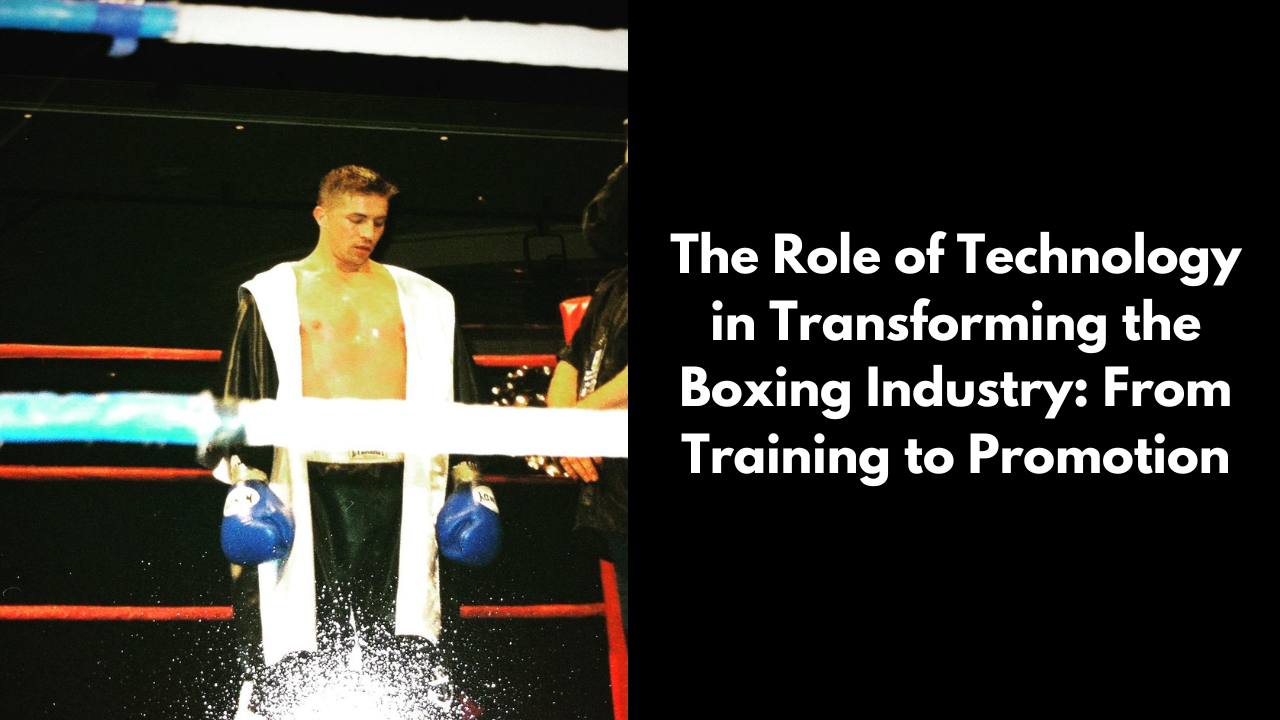Technology has revolutionized virtually every industry, and boxing is no exception. For individuals like David Deicke, who have a background in boxing and a passion for sports cars and business, understanding how technology is transforming the boxing industry is essential. This blog will explore the various ways technology is changing the landscape of boxing, from training and performance analysis to promotion and fan engagement.
Technological Advancements in Training and Performance

1. Wearable Technology: Wearable technology has become a game-changer in the world of boxing. Devices such as smart gloves, heart rate monitors, and fitness trackers provide real-time data on a boxer’s performance, including punch speed, force, and frequency. These wearables help trainers and athletes track progress, identify areas for improvement, and tailor training programs to enhance performance.
2. Virtual Reality (VR) and Augmented Reality (AR): Virtual reality and augmented reality are making their way into boxing training regimes. VR simulations allow boxers to practice their skills in a controlled environment, replicating different fight scenarios and opponents. AR can be used to overlay information during training sessions, such as punch statistics and movement patterns, offering valuable insights for both the boxer and the coach.
3. Data Analytics and Performance Analysis: Data analytics plays a crucial role in modern boxing training. Advanced software and algorithms analyze a boxer’s performance data to provide detailed insights into their strengths and weaknesses. Coaches can use this information to develop targeted training strategies, optimize fight plans, and improve overall performance. For a businessman like David Deicke, investing in data analytics solutions for boxing gyms can create a competitive edge.
Enhancing Fan Engagement and Promotion
1. Social Media and Digital Platforms: Social media has transformed how boxers and promoters engage with fans. Platforms like Instagram, Twitter, and YouTube allow fighters to connect directly with their audience, share behind-the-scenes content, and build a loyal fan base. Digital platforms also provide new avenues for promoting fights, selling tickets, and streaming events, increasing reach and revenue potential.
2. Live Streaming and Pay-Per-View: Advancements in live streaming technology have made it easier for fans to watch boxing matches from anywhere in the world. Pay-per-view services have also evolved, offering high-quality streams and interactive features that enhance the viewing experience. Promoters can leverage these technologies to reach a global audience, increase viewership, and generate higher revenues.
3. Fan Engagement Apps and Platforms: Mobile apps and online platforms designed specifically for boxing fans offer interactive features such as live score updates, fighter stats, and exclusive content. These platforms enhance the fan experience by providing real-time information and engaging features. For entrepreneurs like David Deicke, developing or investing in fan engagement technologies can be a lucrative business opportunity.
Innovations in Fight Promotion and Event Management
1. Digital Marketing and Influencer Partnerships: Digital marketing strategies, including influencer partnerships, have become essential for promoting boxing events. Collaborating with influencers and leveraging their reach can help generate buzz and attract a broader audience. Effective digital marketing campaigns can increase ticket sales, pay-per-view purchases, and overall event visibility.
2. Blockchain and Ticketing Solutions: Blockchain technology is addressing issues related to ticket fraud and scalping in the sports industry. Secure and transparent blockchain-based ticketing systems ensure that fans get authentic tickets and promoters can track ticket sales in real-time. Implementing blockchain solutions can improve trust and efficiency in the ticketing process.
3. Virtual and Hybrid Events: The COVID-19 pandemic accelerated the adoption of virtual and hybrid event models in the sports industry. Virtual events, including online fight nights and virtual meet-and-greets, offer new revenue streams and engagement opportunities. Hybrid events, combining in-person and virtual elements, provide flexibility and can attract a diverse audience.
The Impact of Technology on Fighter Health and Safety
1. Advanced Medical Imaging and Diagnostics: Technology is enhancing fighter health and safety through advanced medical imaging and diagnostics. MRI and CT scans, along with other imaging technologies, help detect injuries early and prevent long-term damage. Regular health assessments and monitoring are crucial for maintaining fighter safety and performance.
2. Injury Prevention and Recovery Technologies: Innovative injury prevention and recovery technologies are becoming integral to boxing training. Cryotherapy, hyperbaric oxygen therapy, and electrical stimulation devices aid in faster recovery and reduce the risk of injuries. These technologies help boxers maintain peak physical condition and prolong their careers.
3. Concussion Monitoring and Management: Concussions are a significant concern in boxing. Advanced concussion monitoring systems, including sensor-equipped headgear and neurological assessments, help detect and manage concussions more effectively. Ensuring the health and safety of fighters is paramount, and technology plays a vital role in achieving this goal.
The Future of Boxing with Technology

1. AI and Machine Learning in Training: Artificial intelligence and machine learning are poised to further revolutionize boxing training. AI-driven training systems can analyze vast amounts of data, simulate fight scenarios, and provide personalized training recommendations. These technologies can help boxers refine their techniques and improve their strategic approach.
2. Enhanced Broadcast and Viewing Experiences: The future of boxing broadcasts will likely feature enhanced viewing experiences through technologies like 4K resolution, immersive audio, and interactive features. Virtual reality broadcasts could allow fans to experience fights from the perspective of being in the ring or sitting ringside, creating a more immersive and engaging experience.
3. Globalization and Accessibility: Technology is making boxing more accessible and global. Online platforms and digital content allow fans from all over the world to follow their favorite fighters and events. This globalization of boxing expands the sport’s reach and opens up new markets for promoters and sponsors.
Conclusion
The boxing industry is embracing technology to enhance training, promote events, engage fans, and ensure fighter health and safety. Entrepreneurs like David Deicke, who have a passion for boxing and business, can leverage these technological advancements to create new opportunities and stay competitive in the evolving landscape.
As technology continues to advance, the future of boxing holds exciting possibilities. Embracing innovation, investing in cutting-edge solutions, and staying attuned to industry trends will be crucial for success. For young entrepreneurs and boxing enthusiasts, the intersection of technology and boxing offers a dynamic and promising field to explore.

